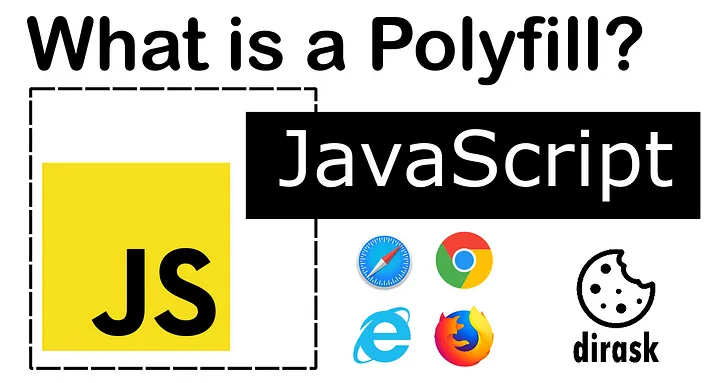Polyfill in JS
 Usaid Patel
Usaid Patel
What is polyfill
In Javascript, a polyfill is a “ piece of code ” that adds modern features to older browser versions that don’t natively support them. It acts as a backup. It checks if the browser already supports the specific features; if not, it adds them so the website or app still works as expected.
Why Use Polyfills
Consistency: It helps ensure that all users, regardless of their browser version, have a similar experience with the website or app.
Future-Proofing: If the User uses any browser version, they will get the same experience as the website or app, whether they upgrade the browser or not. Thus, users who use any browser will get the same functionality and features as a website or app.
Types of Polyfills
Perfect Polyfills: It is a perfectly implemented features that completely mimic the new features without any issue or side effect, just like it was built into the browser.
e.g., JSON library, which implementsJSON.stringifyandJSON.parseon older browsers that do not already support the globalJSONobject.Common Polyfills: It implements features almost completely but has some small missing features, some annoying side effects and some edge cases that are missing or don’t work correctly. Most Polyfills fall into this category.
Partial Polyfills: Partial Polyfills implement certain features but have a lot of missing broken functionality.
Fallback Polyfills: Fallback Polyfills don’t implement the new functionality at all, but they make sure that there is graceful fallback behaviour for older browsers.
Benefits of Using Polyfills
Better User Experience: Polyfills allow developers to improve
user experienceby adding features and capabilities, even in older browsers.Reduced development time: By enabling developers to use new capabilities without having to write specific code for them
older browsers, polyfills can save developers a significant amount of effort.Cost-effective: Using polyfills saves money by preventing the need to design specialised solutions for every browser or device by ensuring that your code works on a variety of
browsers and mobile devices.Enhanced security: Using polyfills can also increase
securityby offering a different implementation of a feature that might have security flaws inearlier browser versions.Better cross-browser compatibility: Polyfills enable programmers to use new capabilities of a
programming languageorweb platformin situations or environments that don't support them, ensuring that their code functions reliably across variousbrowsers and devices.Future-proofing: By incorporating new capabilities that might become standards in upcoming iterations of the programming language or web platform, developers can
future-prooftheir code by utilising polyfills.Open-source community: Developers can use a variety of
open-sourcepolyfill libraries to make use of the skills and knowledge of other developers.Better accessibility: By offering fallbacks for features that may not be supported
assistive technologies, polyfills can help make web applications more accessible to users with impairments.
How Polyfills works
Feature Detection
The polyfill first checks whether the browser already supports the feature. This is usually done by testing whether a certain function or object exists. If the browser does not support it, the polyfill does nothing.
Feature Implementation
If the feature is missing, the polyfill then adds code to implement it. This custom code mimics the behaviour of the native feature so that your application can use it seamlessly.
Write your one Polyfills
The "signature" of a polyfill is essentially the blueprint for what the polyfill needs to define the functionality you want to achieve. Take the .myMap() method as an example. Its signature describes that it should:
Accept a function as input.
Iterate over each element of the array.
Return a new array containing the results of applying that function to every element.
In other words, when creating a polyfill for .myMap(), you're aiming to replicate this exact behaviour, ensuring that even in environments where .myMap() isn't natively supported, your code still works as expected.

In Summary
Polyfills allow developers to use modern web features in older browsers without sacrificing functionality. They provide a consistent, secure, and efficient experience for all users by ensuring that your code works across various browsers and devices. Whether you’re creating a perfect, common, partial, or fallback polyfill, the goal is always the same: to bridge the gap between new technology and older environments.
Subscribe to my newsletter
Read articles from Usaid Patel directly inside your inbox. Subscribe to the newsletter, and don't miss out.
Written by
